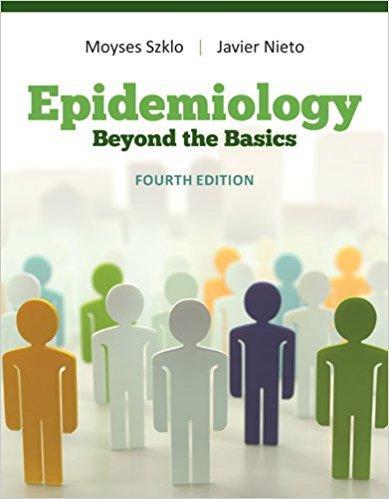
Epidemiology: Beyond The Basics
$153.50
Item#: 9781284116595
Available: 99999
On Order: 0
Written for those who are familiar with the basic strategies of analytic epidemiology, Epidemiology: Beyond the Basics takes readers through a more rigorous discussion of key epidemiologic concepts and methods such as study design, measures of association, research assessment, and more.
With real-life examples throughout, the book avoids complex statistical formulations and is an invaluable resource for intermediate students and practicing epidemiologists who wish to expand their knowledge of epidemiology and its role in the medical and public health sciences.
The Fourth Edition offers updated examples and new exercises in each chapter as well as many new discussions of topics such as: prevalence ratios vs. odds ratios; inverse probability weighting as a technique for correcting for selection bias; regression to the mean as a source of confounding (Glymour bias); mediation analysis; correction for competing causes in multivariate analysis; the extension of the Cox model for the analysis of nested case-control studies; multilevel analysis; translational epidemiology and much more.
This edition also offers an updated package of instructor materials including instructorâÂÂs manual, PowerPoint lecture slides, and a test bank.
Table of Contents
Part 1: Introduction
Chapter 1: Basic Study Designs in Analytical Epidemiology
Part 2: Measures of Disease Occurrence and Association
Chapter 2: Measuring Disease Occurrence
Chapter 3: Measuring Associations Between Exposures and Outcomes
Part 3: Threats to Validity and Issues of Interpretation
Chapter 4: Understanding Lack of Validity: Bias
Chapter 5: Identifying Noncausal Associations: Confounding
Chapter 6: Defining and Assessing Heterogeneity of Effects: Interaction
Part 4: Dealing with Threats to Validity
Chapter 7: Stratification and Adjustment: Multivariate Analysis in Epidemiology
Chapter 8: Quality Assurance and Control
Part 5: Issues of Reporting and Application of Epidemiologic Results
Chapter 9: Communicating Results of Epidemiologic Studies
Chapter 10: Epidemiologic Issues in the Interface with Public Health Policy
Appendix A: Standard Errors, Confidence Intervals, and Hypothesis Testing For Selected Measures of Risk and Measures of Association
Appendix B: Test for Trend (Dose Responses)
Appendix C: Test of Homogeneity of Stratified Estimates (Test for Interaction)
Appendix D: Quality Assurance and Quality Control Procedures Manual for Blood Pressure Measurement and Blood/Urine Collection in the ARIC Study
Appendix E: Calculation of the Intraclass Correlation Coefficient
Appendix F: Exercises-Answers
Asset: GENERAL BOOKS
Format: Paperback
Edition: 04
Department: 04 Medical Reference
Section: 04 Medicine General
Author: Szklo & Nieto
Publisher: Jones & Bartlett Publishers
Publication Year: 2018 May



